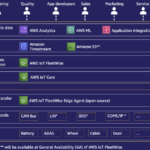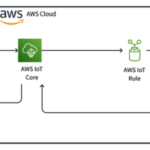The most important business conversations your organization has are the daily digital exchanges of data with your customers and suppliers. Significant negative trends have emerged in the past few years, raising pressure on the critical software that most companies use to exchange business data within and outside their company, especially with their customers and suppliers. Your organization is likely feeling some challenges created by these trends.
Among the current key trends impacting file transfer and B2B systems, undoubtedly the main disruption comes from the overall increase in transaction volume. With the accelerated digitization of many business processes, organizations have seen unprecedented growth in their file transfer and B2B transactions in recent years.
Other trends include:
A growing number of customers and suppliers. As more organizations look to increase the agility of their supply chain, they are adding suppliers.
Expectations for faster response times. Many organizations are receiving response time objectives from their customers. Not replying to an inventory request or shipping date query fast enough means the customer may move on to the next supplier.
IT and cloud efficiencies. By moving to the cloud, IT efficiencies are being explored in every IT department. Your company’s journey to the cloud can impact which solution best suits the digital conversation you have with your organization’s business partners.
Increasing transaction complexity. As some customers and suppliers request semi-custom APIs and Hybrid EDI-API options, complexity soars.
Increasing costs of data breaches. As found in the IBM Security report Cost of a data breach 2022, the cost of a breach has risen 12.5% as ransomware and destructive attacks surge.
Trends, challenges, disruptions
Ignoring these trends can be extremely costly. If not appropriately analyzed, trends can become challenges. And unaddressed IT challenges can become business disruptions. Businesses that ignore this landscape are more likely to experience order delays and interferences resulting in revenue loss, unexpected costs or customer dissatisfaction.
As these challenges remain unaddressed, IT teams are beset by tasks of increasing complexity driven by weak or inconsistent security and lack of visibility.
Siloed solutions and IT skills shortages are also common pain points. These challenges cause companies to struggle with their journey to the cloud and modernization efforts, leading to difficulty in scaling and slow onboarding of new customers or suppliers.
Is your business experiencing any of these IT trends in your file transfer or B2B transactions? Then you need modern solutions to meet and overcome IT challenges before they impact your business. And if your organization is not yet seeing these trends surface, then it’s important to start building the foundation for growth your business needs before the storm hits.
Businesses need a modern and reliable B2B data exchange solution built for demanding workloads. An effective solution must provide:
Connectivity across a wide range of standards and protocols, data translation and validation
End-to-end insight at the document, transaction and business level
Rapid onboarding and efficient management of customers and partners
Hybrid cloud, on-premises, and SaaS capabilities to support self-managed, vendor-managed or custom deployment
Secure, scalable and reliable solutions for a diverse range of demanding workloads
IBM Sterling® Data Exchange is one such effective solution: a group of offerings built to improve the exchange of data with customers and suppliers, revolving around managed file transfer (MFT) and B2B integration. Take advantage of IBM’s long-standing experience in EDI, APIs and MFT business data exchange.
The post Trends driving managed file transfer and B2B data exchange modernization appeared first on IBM Business Operations Blog.
Leave a Reply
You must be logged in to post a comment.

